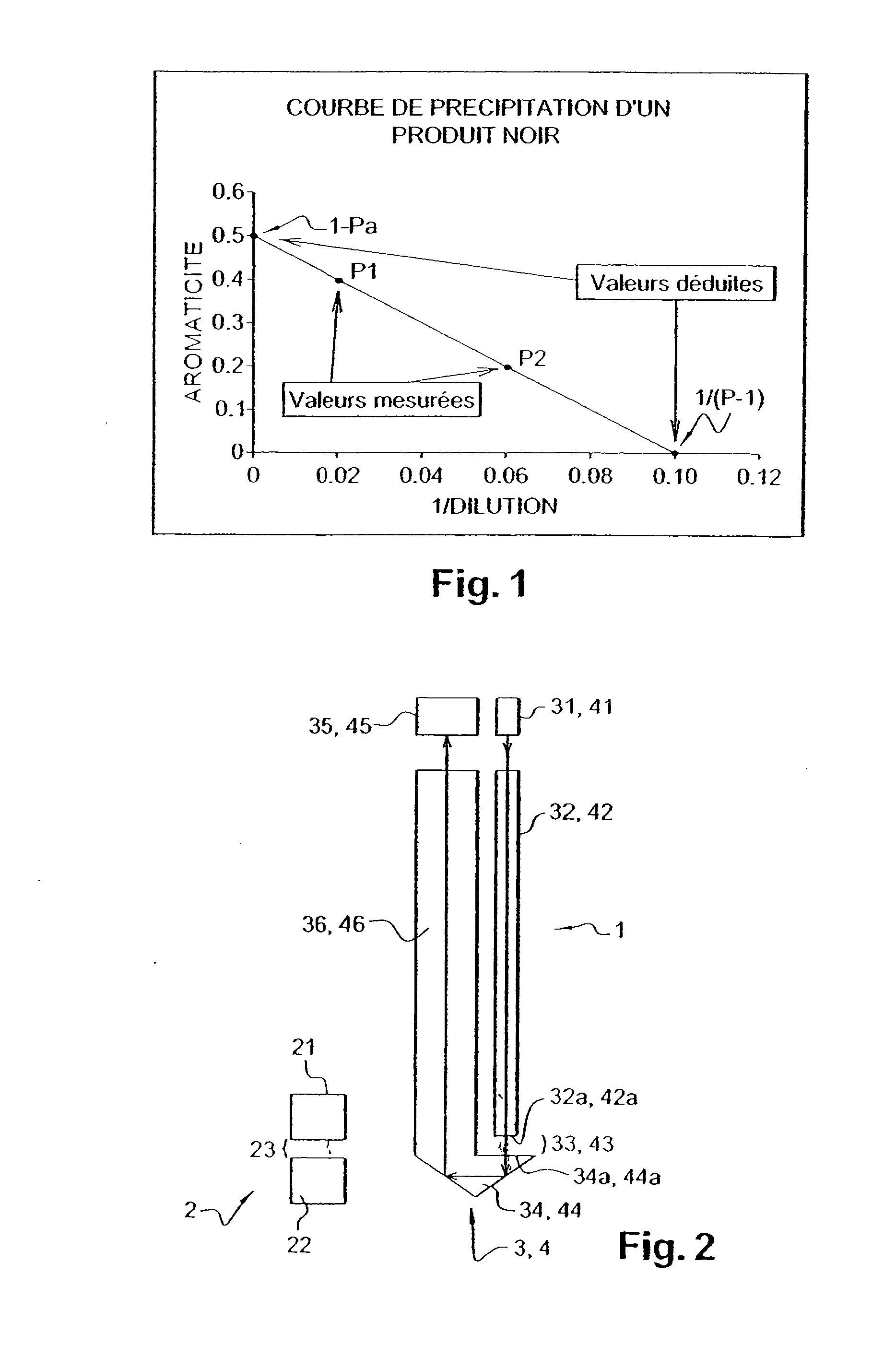Probe for Measuring Light in a Liquid, Probe for Detecting the Flocculation Threshold of a Colloidal Medium, Related Detection Method and Use for Determining the Flocculation of Asphaltenes
a colloidal medium and probe technology, applied in radiation pyrometry, material testing goods, instruments, etc., can solve the problems of asphaltene flocculation, colloidal system destabilization more or less easily, black product destabilization,
- Summary
- Abstract
- Description
- Claims
- Application Information
AI Technical Summary
Benefits of technology
Problems solved by technology
Method used
Image
Examples
example 1
[0073] Comparative measurements were carried out on 8 samples of different black products for which the P, Pa values were measured and the Po value was calculated, on the one hand with a method using the probes proposed by Texaco Belgium SA (“Measurement method A” in Table 1 below) and on the other hand with the device and the method according to the present invention (“Measurement method B”).
[0074] In this example, the black products referenced PN1 to PN8 correspond to:
[0075] PN1 and PN2 / Residues of desulphuration of an atmospheric residue;
[0076] PN3 and PN4 / Fuel oils;
[0077] PN5 and PN6 / Visbroken residues under vacuum;
[0078] PN7 / Charge of a visbreaking unit (Residue under vacuum+20% atmospheric residue);
[0079] PN8 / Visbroken residue under vacuum
TABLE 1Comparison of the results of the P and Pa measurements, and thecalculation of Po, with the Texaco probes (Measurement method A)and the device and method according to the invention(Measurement method B)Measurement method AMeasur...
example 2
[0082] In order to compare the repeatability values obtained with the measurements of P, Pa then of calculated Po, which can be obtained by the manual method using the 20 Texaco probes (Measurement methods A) and the automated method the device and the method of which are the subject of the present invention (Measurement method B), 3 samples PN2, PN3 and PN8 were chosen from the corpus defined in Example 1 above.
[0083] The results for 8 different measurements, with the 2 methods, on each of these 3 samples are shown respectively in Tables 2, 3 and 4 below. The average values calculated, as well as the standard deviations and the repeatabilities are shown in these same tables.
TABLE 2Measurement of the repeatabilities of the values P, Pa andPo on the sample PN2 obtained with the Texaco probes(Measurement method A) and the device and methodaccording to the invention (Measurement method B)PN2Number ofMeasurement method AMeasurement method BanalysesPPaPoPPaPo11.960.710.571.920.710.562...
PUM
| Property | Measurement | Unit |
|---|---|---|
| temperatures | aaaaa | aaaaa |
| time | aaaaa | aaaaa |
| time | aaaaa | aaaaa |
Abstract
Description
Claims
Application Information
 Login to View More
Login to View More - R&D
- Intellectual Property
- Life Sciences
- Materials
- Tech Scout
- Unparalleled Data Quality
- Higher Quality Content
- 60% Fewer Hallucinations
Browse by: Latest US Patents, China's latest patents, Technical Efficacy Thesaurus, Application Domain, Technology Topic, Popular Technical Reports.
© 2025 PatSnap. All rights reserved.Legal|Privacy policy|Modern Slavery Act Transparency Statement|Sitemap|About US| Contact US: help@patsnap.com


